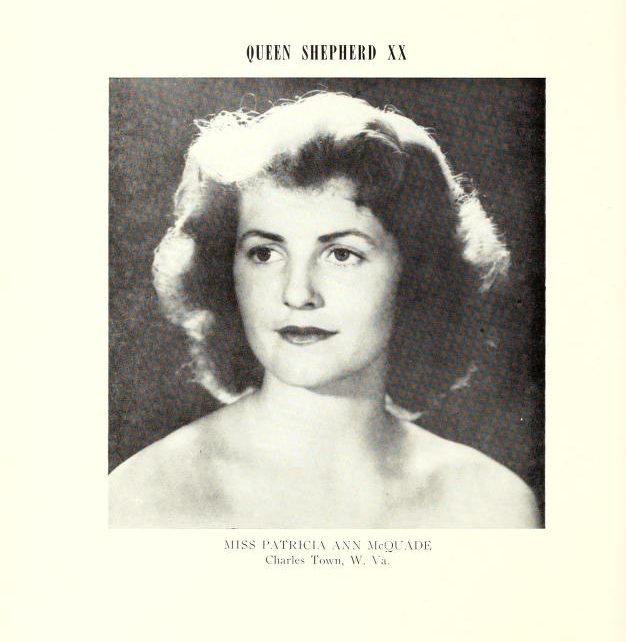Forward
The forward notes that Shepherd College is experiencing a “renaissance” both a rebirth and a rapid growth (Cohongoroota, 1949, pg. 3). The editors, Dana Hunt Benfield and Harvey Curtis Fenimore Jr., refer to the rebirth of a new yearbook. They mention a new future, but also that they must not forget about the past. Again, this is directly referring to the history of Shepherd College. This is very interesting. Essentially what they are saying is that they want these books to be remembered for years. Similar, in affect, to an artifact to portray student life to those who come behind them. Also, it discusses the meaning of the name “Cohongoroota” literally translating from Native American to mean “river of wild geese flying” (Cohongoroota, 1949, pg. 3). There seems to be a large importance associated to conveying the rich history that Shepherd contains. The authors are mainly discussing all of these topics in the forward of the 1949 yearbook because they have not produced a new one since 1929.
They end the forward by stating that they hope that the lower classmen “will never let such a lapse occur, not even for one year” (Cohongoroota, 1949, pg. 3). The forward as a whole is quite intriguing. The authors not only mention the large gap in time, but they also mention a need for future continuation. This brings forth the idea that as a whole, they feel a need to preserve the memory of Shepherd College life.
Dedication
They also include a very touching dedication to President White who died a year prior to this edition of the yearbook (Cohongoroota, 1949, pg. 5). They go on to list all of the contributions he made to the campus. Later, they provide photos of all of the buildings then present on campus (Cohongoroota, 1949, pgs. 30-36). It is very impressing to see the changes over the years from a single school building, to multiple buildings and dorms.
To see more on this topic visit the transformation tab!
Content
Besides the forward, this yearbook is not too different in content. However, instead of stating the ladies social accomplishments, in their photo caption of the seniors, they list their academic honors. Also, different from the originals, they list the senior’s hometown and if they are a commuter or resident student. This also strikes me because they feel it necessary to make clear that there is a separation between the two. This was not present until this year and could also correlate with the rise in enrollment as well as the rise in easy access to automobiles since the last published yearbook. Also, it could point to a change in student culture. Instead of sending their children away to be educated, it seems as though parents and children decide a near-home education is also worthy.
Social
Also in this edition, there was a rise in social groups rather than strictly academic groups. Five Greek groups are included in the yearbook (Cohongoroota, 1949, pg. 90-98). Also included, the college orchestra, college choir, International relations club, Home economics club (still all women), Future teachers of America, varsity club, the veterans association, the YWCA, and finally the YMCA. Also, it is interesting to note that Shepherd had only three sports teams at the time: football, basketball, and baseball. All three men-only sports. I also find it intriguing to see how Miss Shepherd changes over the years. Based on the women who are chosen, we can make assumptions as to desirable traits of the time (Cohongoroota, 1949, pg. 90).
Conclusion
Overall, this edition of the Cohongoroota portrays the importance the students hold with preserving memory. Again, they sought to create these yearbooks in order to leave behind artifacts from their campus life.

















